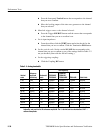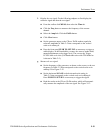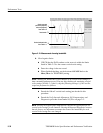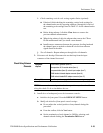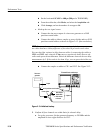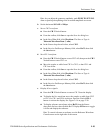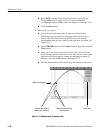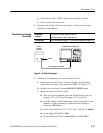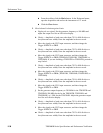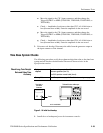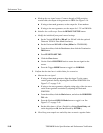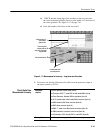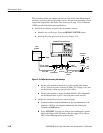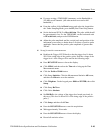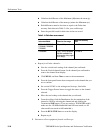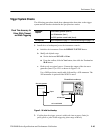
Performance Tests
2-38
TDS5000B Series Specifications and Performance Verification
H From the toolbar, click the Horiz button. In the Horizontal menu,
open the Acquisition tab and set the instrument to E.T. mode.
H Click the Close button.
2. Check channel isolation against limits:
a. Display the test signal: Set the generator frequency to 100 MHz and
adjust the output level for an 8-division display.
b. Check — Amplitude of each trace other than CH 1 is 0.08 division or
less (discount trace width). Enter the amplitude in the test record.
c. Move the signal to the CH 2 input connector, and then change the
Trigger S OURCE to CH 2.
d. Check — Amplitude of each trace other than CH 2 is 0.08 division or
less (discount trace width). Enter the amplitude in the test record.
e. Move the signal to the CH 3 input connector, and then change the
Trigger S OURCE to CH 3 (TDS5034B, TDS5054B, TDS5054BE, or
TDS5104B). If you are checking a TDS5032B or TDS5052B, proceed to
step i below.
f. Check — Amplitude of each trace other than CH 3 is 0.08 division or
less (discount trace width). Enter the amplitude in the test record.
g. Move the signal to the CH 4 input connector, and then change the
Trigger S OURCE to CH 4. (TDS5034B, TDS5054B, TDS5054BE, or
TDS5104B)
h. Check — Amplitude of each trace other than CH 4 is 0.08 division or
less (discount trace width). Enter the amplitude in the test record.
i. Move the signal to the CH 1 input connector, and then change the
Trigger S OURCE to CH 1.
j. Set the generator output frequency to 350 MHz for the TDS5032B and
TDS5034B, 500 MHz for the for the TDS5052B , TDS5054B, and
TDS5054BE, or 1 GHz for the TDS5104B. Adjust the generator output
level for an 8-division display.
k. Check — Amplitude of each trace other than CH 1 is 0.16 division or
less (discount trace width). Enter the amplitude in the test record.
l. Move the signal to the CH 2 input connector, and then change the
Trigger S OURCE to CH 2.
m. Check — Amplitude of each trace other than CH 2 is 0.16 division or
less (discount trace width). Enter the amplitude in the test record.



